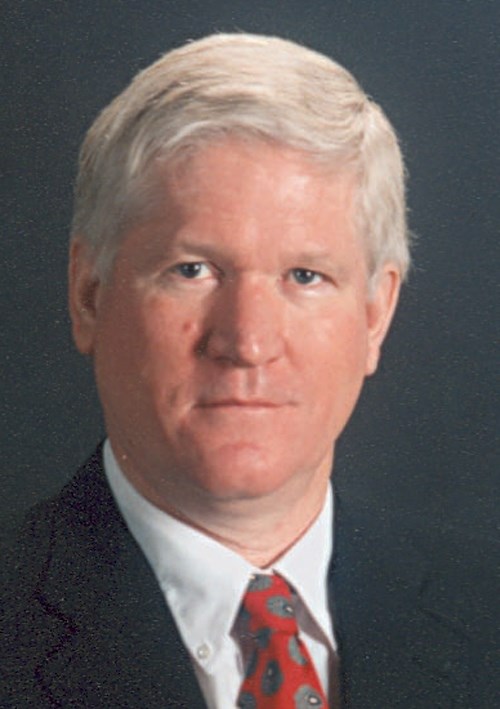CF 2009: Comment on key end-markets
Conference keynoter Jens Hinrichsen (Aerospace Advisory Group LLC) evaluated factors likely to influence materials selection for aircraft that will replace the Airbus A320 and Boeing 737 families.He started by establishing structures that he believes are very likely or somewhat likely to be composite structures: the empennage and rear pressure bulkhead and frame, the center wing box, floor beams and the unpressurized fuselage.
Conference keynoter Jens Hinrichsen (Aerospace Advisory Group LLC) evaluated factors likely to influence materials selection for aircraft that will replace the Airbus A320 and Boeing 737 families.
He started by establishing structures that he believes are very likely or somewhat likely to be composite structures: the empennage and rear pressure bulkhead and frame, the center wing box, floor beams and the unpressurized fuselage. The structures he considers less likely to be made from composites, and the subject of his remarks, include the pressurized fuselage skins and stringers, standard frames, load-introduction frames and door cut-out doublers.
For the fuselage skins, Hinrichsen said the design driver will be damage tolerance, not strength, and reported that weight savings at the cost of increased maintenance will be unacceptable to Boeing, Airbus and their customers. Every plane, he noted, is sold with a guaranteed maintenance cost for each part/structure, thus a composite fuselage skin must meet that maintenance cost requirement. Additionally, the potential for barely visible impact damage will require careful definition of minimum skin thickness.
In particular, airlines are most worried about damage from runway debris, which costs them $4 billion annually in repairs. Here, Hinrichsen said airlines have two challenges: Determining the severity of damage in a composite skin structure, and developing a skin structure that allows safe flight if barely visible damage is overlooked during inspection. Another influence on material selection is tool occupation time. To cost-justify composites, the tooling for composite structures must be amortized quickly, and that will require faster material placement rates from automated tape laying and fiber placement equipment.
Hinrichsen ended with a fuselage skin thickness proposal for narrow-body aircraft, if composites are used: 3 mm/0.12 inch for the upper fuselage, 3.5 mm/0.14 inch for the side fuselage, and 4 mm/0.16 inch for the bottom portion of the fuselage.
In the end, said Hinrichsen, aircraft manufacturers will be forced to balance weight, strength and structural thickness requirements: “Potential of weight savings via composites in the fuselage is significantly reduced for narrow-body aircraft as strength/stiffness requirements result in skin thickness well below the threshold for structural thickness.”
Energy business analyst Steven Kopits (Douglas-Westwood), updated offshore wind farm development, noting that commercial activity didn't begin until 2001, and then only in Europe, but is growing quickly. Continued growth is likely because coastal waters there are relatively shallow, major energy consumers are nearby and governments are well organized to encourage development. In Europe, current offshore installed capacity is 1.5 GW, 334 MW of which was placed in 2008, with an additional 1.2 GW under construction right now. Dominated, at first, by Denmark, offshore turbine construction is now is led by the United Kingdom, he says. Although the U.S. is lagging European offshore efforts, it has attractive waters in the Great Lakes and off the New England coast (West Coast waters are too deep).
One of the biggest hurdles right now is cost. Kopits reported that offshore wind costs $5 million (USD) per nameplate megawatt, $3 million of which is subsidized. By contrast, 600 MW of offshore wind ($2 billion in subsidies) is the equivalent of one gas-fired power plant. Further, capital expenditure and operations and maintenance costs, offshore, are typically about twice that for onshore systems, he said. Accordingly, Kopits predicted that offshore developers will seek larger turbines with longer blades, in which carbon fiber will play a critical role in meeting strength and stiffness requirements at reduced weight.
In the 2009-to-2013 time period, Kopits looks for 6.6 GW of installed offshore capacity worldwide, worth about $26 billion and comprising 4,000 to 5,000 composite rotor blades. For the 2013-2017 timeframe, Kopits said to look for seven to eight offshore wind farms in North America, each 10 to 20 miles (16 to 32 km) offshore in water 100 to 150 ft (30 to 46m) deep. These projects will consume about 1,000 turbines a year for four years, with each turbine rated at 4 to 5 MW. Following this flurry, Kopits expects 100 to 200 new offshore turbines per year.
Industry consultant Malcolm Rosenow discussed the potential demand for carbon fiber in the natural gas vehicle (NGV) market. He reported that there are currently 11 million to 12.5 million NGVs on the road, worldwide. Pakistan, Argentina, Brazil, Iran and India together account for 72.5 percent of the world's total number of NGVs. Six countries from the Asia-Pacific region round out the top 10, which collectively represents 88.6 percent of the total market. Among them, China expects high growth: Its government has mandated conversion to CNG-powered commercial vehicles in certain cities. By 2020, he said, this number could be anywhere between 53 million and 82 million vehicles.
Rosenow said to expect 65 million NGVs by 2020, with demand for 166.5 million pressure vessels. The question outstanding, he said, is What type of pressure vessel will prevail? In North America and Europe, most CNG is stored in Type III and Type IV composite overwrapped pressure vessels (COPVs); in other regions of the world (~93 percent), vessels are fabricated to meet Type I (heavy steel) and Type II (fiberglass) parameters. Composite storage vessels are appealing for many reasons, including reduced weight, durability and storage density. But the weight and cost of CNG pressure vessels, said Rosenow, are important considerations when specifying the number and type of tanks to be put in a vehicle. The fastest growing CNG vehicle markets use Type I and Type II vessels, but with favorable supply and pricing, demand could increase for use of Type III and IV (carbon fiber) vessels.
This demand will depend on market forces — specifically, if and to what extent North American and European governments mandate some sort of conversion to CNG vehicles. Under a “business as usual” scenario, he predicted that carbon fiber demand for Type III and IV vessels will range from 5,100 to 10,200 metric tonnes/yr (11.2 million to 22.5 million lb/yr). Under his low-end “policy-governed” scenario, Rosenow expects carbon fiber demand to range from 34,500 to 69,000 metric tonnes/yr (76.1 million to 152.1 million lb/yr).
Spencer Composites Corp. founder Brian Spencer focused his presentation on the disparity between actual and potential use of carbon fiber in offshore oil and gas applications. Although carbon fiber has been talked about for years and its potential in this market is substantial, Spencer noted that oil exploration offers several challenges: Conservatism and familiarity with metal; high exploration and development cost/risk; a harsh environment; in-service inspection requirements; and increasing distance between oil rigs and existing infrastructure.
Incentives for using composites, however, also are substantial: Light weight, corrosion resistance — a strong sales point in seawater — fatigue resistance, embedded instrumentation, and thermal insulation. Potential carbon fiber use in offshore structures includes: 45 to 50 lb/ft in drilling risers; 10 to 12 lb/ft in production risers; 6 to 7 lb/ft in choke and kill lines; 2 to 5 lb/ft in auxiliary lines; and 16 to 17 lb/ft in 270-mm/10.7-inch-diameter tethers. Spencer noted that one tension leg platform (TLP), on which carbon fiber use was maximized, could consume more than 7 million lb (3,175 metric tonnes) of the material.
Spencer also evaluated carbon fiber use in flywheels, which are being developed for storage of wind energy during non-peak generation. One flywheel, he said, could consume as much as 1,100 lb/500 kg of carbon fiber.
Spencer added that, to date, carbon fiber use in exploration and storage include a composite drilling riser in the Heidrun oil field (North Sea) that has been in service since 2001; a U.S. Department of Energy-sponsored project for a deepwater composite drilling riser and a separate composite auxiliary line project - both under way — and a project in which frequency regulation using a composite flywheel has been certified.
Related Content
The next-generation single-aisle: Implications for the composites industry
While the world continues to wait for new single-aisle program announcements from Airbus and Boeing, it’s clear composites will play a role in their fabrication. But in what ways, and what capacity?
Read More“Structured air” TPS safeguards composite structures
Powered by an 85% air/15% pure polyimide aerogel, Blueshift’s novel material system protects structures during transient thermal events from -200°C to beyond 2400°C for rockets, battery boxes and more.
Read MoreDevelopment of a composite liquid hydrogen tank for commercial aircraft
Netherlands consortium advances cryogenic composites testing, tank designs and manufacturing including AFP, hybrid winding, welding of tank components and integrated SHM and H2 sensors for demonstrators in 2025.
Read MoreCeramic matrix composites: Faster, cheaper, higher temperature
New players proliferate, increasing CMC materials and manufacturing capacity, novel processes and automation to meet demand for higher part volumes and performance.
Read MoreRead Next
Scaling up, optimizing the flax fiber composite camper
Greenlander’s Sherpa RV cab, which is largely constructed from flax fiber/bio-epoxy sandwich panels, nears commercial production readiness and next-generation scale-up.
Read MoreCutting 100 pounds, certification time for the X-59 nose cone
Swift Engineering used HyperX software to remove 100 pounds from 38-foot graphite/epoxy cored nose cone for X-59 supersonic aircraft.
Read MoreUltrasonic welding for in-space manufacturing of CFRTP
Agile Ultrasonics and NASA trial robotic-compatible carbon fiber-reinforced thermoplastic ultrasonic welding technology for space structures.
Read More

































